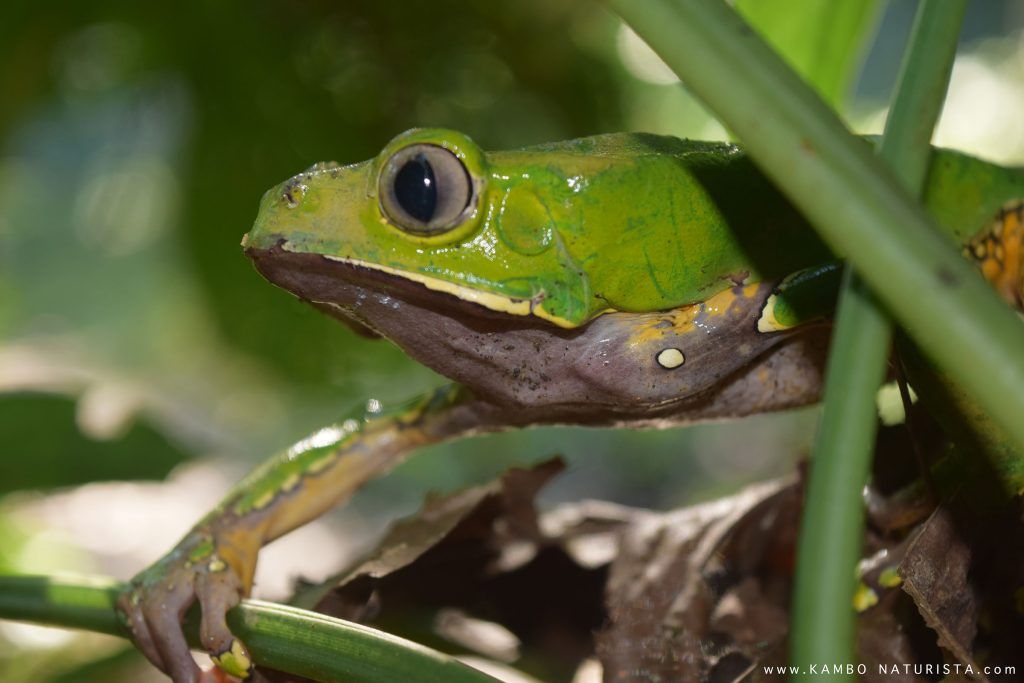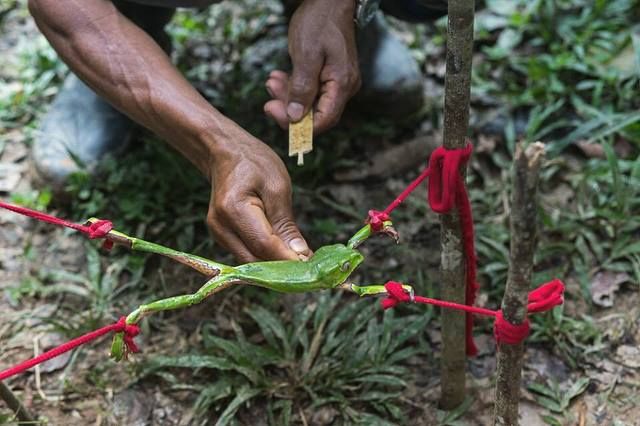What Is Kambo?
Kambo, Sapo or Acate are just a couple of names for a traditional and natural remedy that is used by various indigenous tribes of the Amazon. It consists of the skin secretions of the South American nocturnal treefrog (lat. Phyllomedusa bicolor).
Because of its potent effect on the whole human organism, the Kambo-frog treatment has been used for ages in the Amazon area. The local tribesmen traditionally use it for:
- Healing and cleansing of the body
- Physical strength and stamina
- Spiritual and mental clarity
- Luck and zest of life.

SCIENTIFIC RESEARCH
Even that the use of venoms has been known for millennia in many traditional therapies it was not until the late 20th century that modern medicine adopted a more systematic and rigorous approach to utilizing venoms as therapeutic agents. To date, various bioactive proteins and peptides have been reported from the venom of different species like snakes, scorpions, spiders and many more.
Bioactive peptides are organic substances formed by amino acids joined by covalent bonds known as amide or peptide bonds and they play a significant role in human health by affecting the digestive, endocrine, cardiovascular, immune, and nervous systems. Bioactive peptides can improve the treatment of various diseases and disorders, thus increasing the quality of life.
Vittorio Erspamer was an Italian pharmacologist and chemist who made a number of important discoveries during his career, he published an article based on his studies of peptides in Phyllomedusa frog in 1985 “a huge factory and store-house of active peptides” . In 1992 together with John Daly and their team they were the first western scientists to research and describe the use of the secretion of the kambo frog.
By now there have been a number of bioactive peptides discovered in the secretion of the Phyllomedusa bicolor frog including: Adenoregulin, bombesin, bombesin-nonapeptide, bradykinin, caerulein, deltorphin, dermaseptin, neurokinin B, phyllomedusin, phyllocaerulein, phyllokinin, phyllolitorin, preprotachykinin B, ranatachykinin A, sauvagine, T-kinin and urechis tachykinin.
Each peptide is having a different function and is responsible for different physical symptoms one can have during a Kambo session, like nausea, vomiting, facial flush, tachycardia, changes in blood pressure, sweating, abdominal discomfort and urge for defecation etc. Many of the healing effects are also directly related to the peptides as some of them are antimicrobial, anti inflammatory, antidepressant, analgesic, strength enhancing, stress relieving or supportive for vital cellular processes.
The wide range of the peptides found in the Phyllomedusa bicolor frog and the number of different application areas has been the main focus for the researchers. Many peptides have been synthesized and patented as they have a great potential to create new and better pharmaceutical medicines. This has been criticized by the Brazilian organization Amazonlink, saying the frog forms part of the traditional knowledge of local tribes and the pharma industry is taking advantage of the natives for their commercial interests without giving anything back. Patenting of Third World flora and fauna by companies of the industrialized world is nothing more than biopiracy.
More information about the scientific research can be found here:
http://www.ncbi.nlm.nih.gov/pubmed/?term=Phyllomedusa+bicolor
THE FROG
The name Phyllomedusa bicolor refers to the two different colors the frog is having. As he is living in the trees due his green color on top he is less visible for the few potential predators like birds but he can be spotted easily if looking from down due his white color on bottom.
He moves slowly, not by hopping but by grabbing what is in front of him similar to a monkey which gave him the name “Giant waxy monkey tree frog”.You can hear the mating call he produces as soon as it gets dark, when imitating that sound he would respond to it, especially when raining and around the new moon, thereby it is easy to locate him.
Oftentimes one would need to climb a high tree to get the frog. As the frogs do not try to escape, it is very easy to get them to move on to a large wooden stick or branch from where they can be transported to the place where then the extraction will happen.
POISON EXTRACTION
For that four wooden sticks are put into the ground shaping a small square. Then the frog gets tied with four separated strings by all of his extremities to the wooden sticks, suspending the animal in a way so that it does not move. To make the frog excrete the poison he needs to feel in danger, thereby keeping him tied on the strings makes him to excrete a white, slimy secretion on his legs and the side of his body. This substance is scraped off with a small piece of wood and then transferred to another flat wooden stick, on which it later dries out and gets durable for a long time. The frog is not really hurt during this procedure – nevertheless, the whole act is also not comfortable for him. Once the extraction is done, the frog is released into freedom and his natural surroundings.
Traditionally the strings used to tight the frog are made from a vine, they are hard and they can be unpleasant to the frog for that reason we use thicker, softer and elastic strings. Generally speaking we are always trying to find better ways and improve our methods for the best of all.


